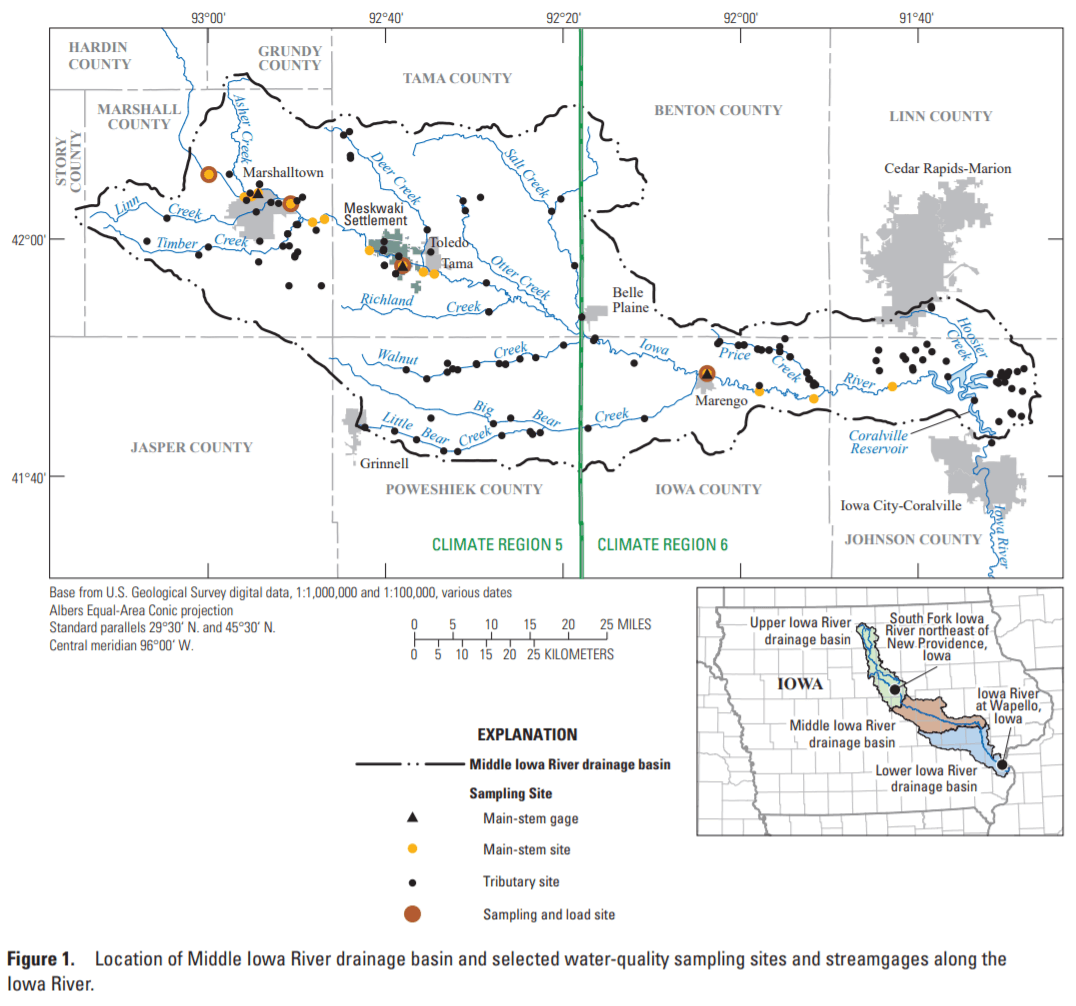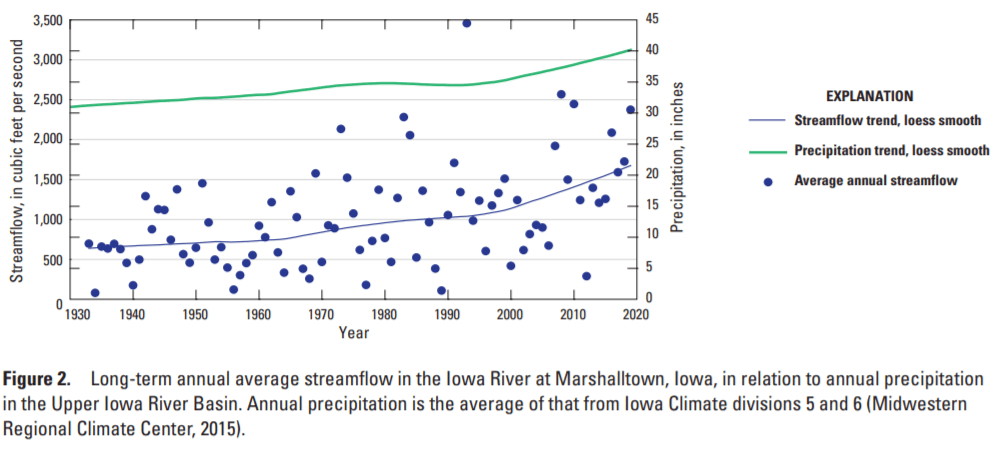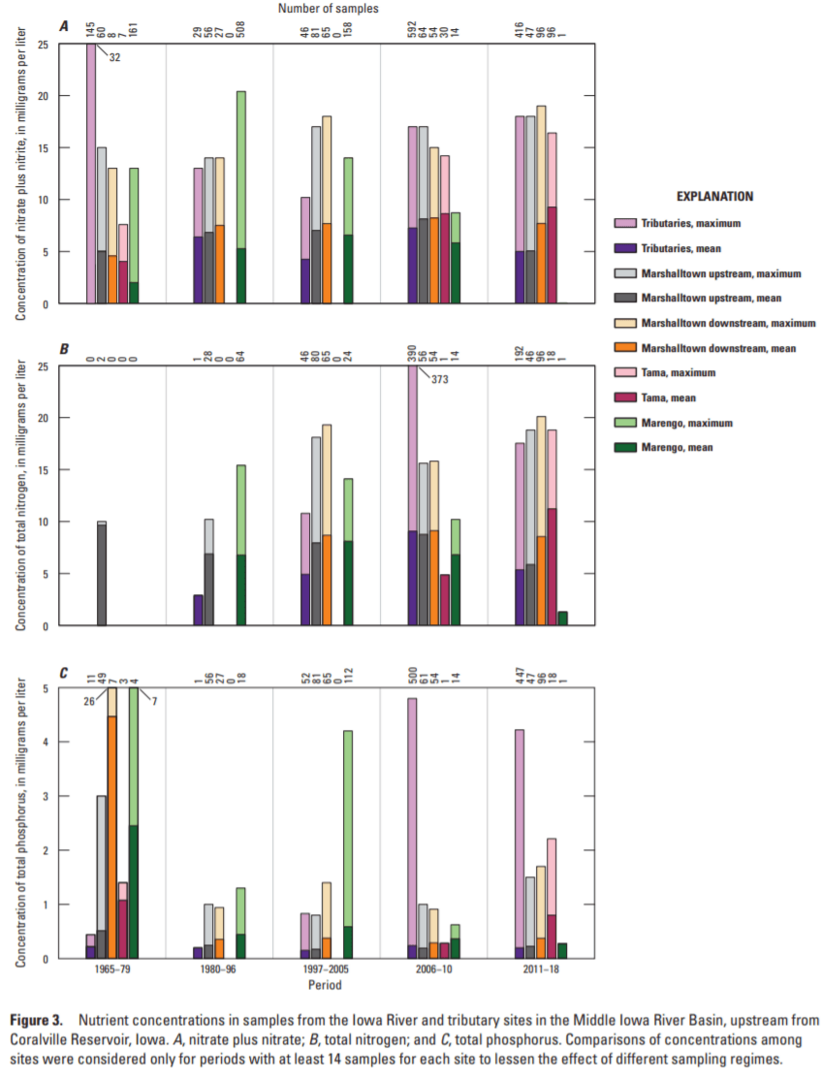Water Baseline
The Meskwaki Settlement is located on the banks of the Iowa River and experiences water quality issues that affect the entirety of the Iowa River watershed. The Iowa River watershed comprises of 80% agriculture, 9% woodlands, the majority of the rest being urban areas. To help reduce the amount of pollution in watersheds like the Iowa River, the State of Iowa has created a Nutrient Reduction Strategy (NRS) which calls for a 45% reduction of both total phosphorus and nitrogen annual loads statewide by 2035. Annual load is defined as the amount of a substance that passes through a certain point on the river.
To determine the water quality status of the Iowa River as they relate to the goals of the NRS, the Meskwaki worked with the United States Geological Survey to create a water quality report. Data from this report is pulled from Federal, Tribal, and State agency sampling programs, and researchers determined the nutrient concentrations, loads, and yields for the stretch of the Iowa River passes through the Meskwaki Settlement (Figure 1).

Stream flow and precipitation were first assessed, and researchers found that average precipitation and streamflow has increased since the 1930’s (Figure 2). Although having ample streamflow is needed in a river, more precipitation can mean more contaminants entering into the river from land run-off, if improper land use is occurring in a watershed.

Researchers next looked at the amount of nitrate + nitrite, total nitrogen, and total phosphorus, that have been reported to be in the Iowa River. These parameters are nutrients found in fertilizers and human/animal waste products, that can all be an issue to water quality if found in too high of amounts. Two time periods were compared to monitor the water quality progress these three parameters, those being 1980-1996 and 2006-2010. Data from 2011-2018 were also used, when available. Study findings indicate that nitrate + nitrite, total phosphorus, and total nitrogen annual loads were typically smaller in the most recent time period when compared to historical reports (Figure 3). This reduction of nutrients was despite an increase in precipitation in the Iowa River watershed, and could suggest that land management tactics to reduce the amount of nutrients in the Iowa River have improved.

Despite this success, the NRS has called for a 45% reduction in the concentrations of nutrients such as nitrate + nitrite, total nitrogen, and total phosphorus. The Meskwaki Nation has determined that the nutrient criteria needed to protect its cultural values and other tribal interests needs to be 5.22, 5.79 and 0.18 milligrams per liter of river water for, nitrate+ nitrite, total nitrogen, and total phosphorus, respectively. This determination has been reported in Meskwaki’s Tribal Water Quality Standards that are currently nearing finalization. When comparing Meskwaki’s protection values with current nutrient levels of the Iowa River (as can be seen in Figure 3), the thresholds of these nutrients are often exceeded by the average annual values. Reaching the NRS goal of a 45% reduction of nutrients will require more work to be done in the Iowa River Watershed.
Learn More About the MNR Department
Visit our department page to learn more about our different branches and check out our recent projects.
